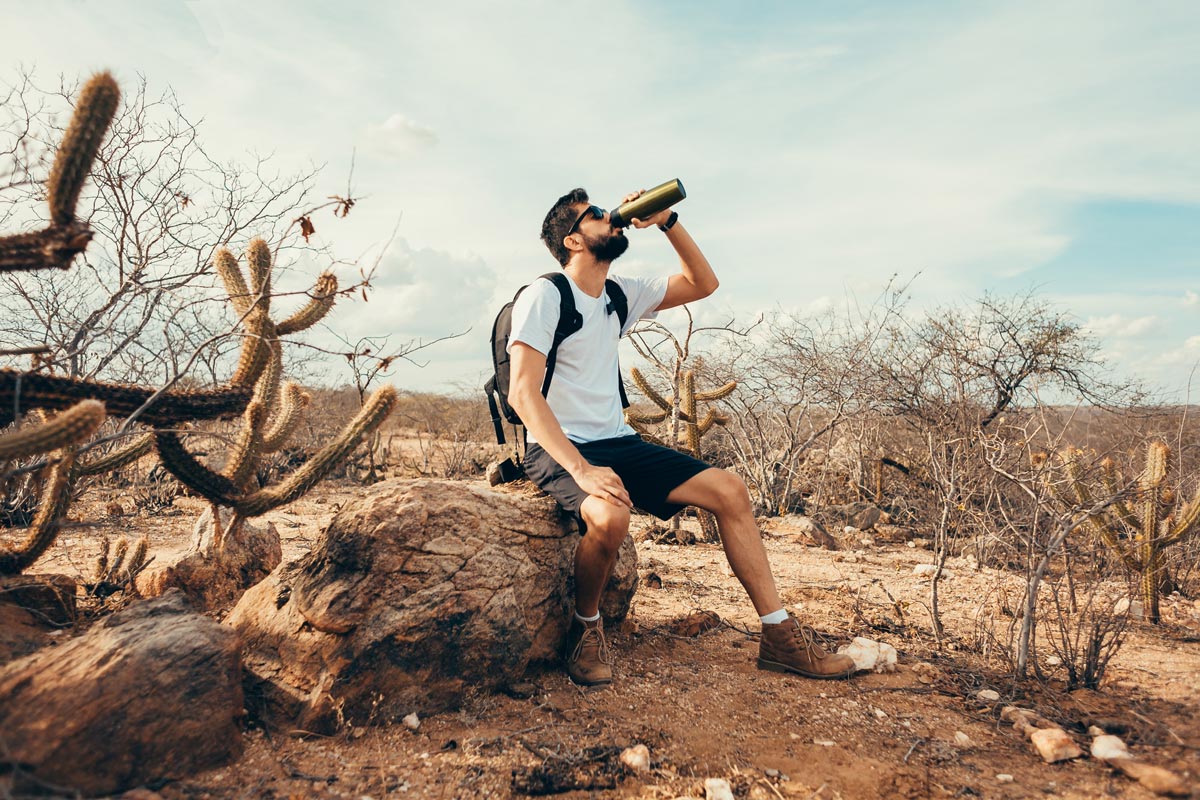Essential Items for Your Next Desert Hike
The desert landscape presents unique challenges and opportunities for hikers, making it essential to be well-prepared with the right gear. In this article, we will explore the must-have items that every hiker should pack for their next adventure in the desert. From sun protection to hydration essentials, having the proper gear can make all the difference in ensuring a safe and enjoyable hiking experience in this harsh environment. Whether you are a seasoned desert explorer or a novice looking to embark on your first trek, these essential items will help you navigate the terrain effectively and stay comfortable throughout your journey. So before you hit the trails, make sure you have all of these crucial pieces of gear in your hiking backpack to ensure a successful and memorable desert hiking excursion.
Sun Protection Gear: Shielding Yourself from the Harsh Sun
When hiking in the desert, protecting yourself from the intense sun is crucial. Invest in a wide-brimmed hat to shield your face and neck from harmful UV rays. Sunglasses with UV protection are also essential to protect your eyes from harsh glare.
Long-sleeved shirts and lightweight pants can provide additional coverage for your skin. Look for clothing made from moisture-wicking material to keep you cool and comfortable throughout your hike. Don’t forget to apply sunscreen regularly, especially on exposed areas like your arms, legs, and face. For guidance on sun safety, see the American Cancer Society tips.
A portable umbrella or parasol can offer extra shade during rest breaks or when taking a break from walking under direct sunlight. Remember that staying hydrated is key in preventing heat-related illnesses while out on the trail. Pack plenty of water and electrolyte-rich drinks to keep yourself hydrated throughout your desert adventure.
Hydration Equipment: Staying Hydrated in Arid Environments
When venturing into the desert for a hike, it is crucial to have the right hydration equipment to stay hydrated and safe. One essential item to pack is a sturdy water container that can hold an ample amount of water. Look for options like durable water bottles or hydration bladders that are designed specifically for outdoor activities.
In addition to carrying enough water, consider bringing along electrolyte packets or tablets to replenish lost nutrients while sweating in the dry desert heat. These small additions can make a big difference in maintaining your energy levels and avoiding dehydration during your adventure. Review the National Park Service hydration guidance before you go.
Best Boots for Desert Hiking: Finding the Right Footwear
When venturing into the desert for a hike, your choice of footwear can make or break your experience. Opt for boots specifically designed for desert terrain to ensure comfort and protection. Look for boots with sturdy soles that provide traction on sandy and rocky surfaces.
Consider investing in hiking boots with breathable materials to combat the intense heat of the desert. Breathable fabrics help prevent moisture buildup within the boot, reducing the likelihood of blisters and discomfort. Additionally, choose boots with ample ankle support to minimize injuries on uneven terrain commonly found in desert landscapes.
Prioritize lightweight boots that offer flexibility without compromising durability. Heavy or stiff boots can tire out your feet quickly, especially during long hikes under the scorching sun. Selecting well-fitted, lightweight hiking boots—such as these tactical combat training boots—will enhance your overall hiking experience in the desert wilderness.
Essential Clothing: Dressing for Success in Hot Climates
When hiking in hot desert climates, wearing the right clothing is crucial for both comfort and safety. Opt for lightweight, breathable fabrics that wick away moisture and allow your skin to breathe. Choose loose-fitting clothing to promote air circulation and prevent overheating.
Consider investing in moisture-wicking shirts, quick-drying pants or shorts, a wide-brimmed hat to protect your face from the sun, and sunglasses with UV protection. It’s also wise to wear long sleeves and pants to shield your skin from harmful UV rays and potential scrapes or insect bites. Don’t forget to bring along a lightweight jacket or sweater for cooler evenings in the desert.
Safe Hiking Practices: Tips for Navigating the Desert Terrain
- Stay Hydrated: In the desert, hydration is crucial. Carry plenty of water and drink regularly to prevent dehydration.
- Protect Your Skin: Wear sunscreen, a hat, and lightweight clothing to shield yourself from the sun’s intense rays.
- Plan Ahead: Research the trail beforehand, know your route, and inform someone of your plans before setting out on a hike in the desert.
Remember that hiking in the desert can pose unique challenges compared to other terrains. It’s important to be prepared and exercise caution at all times. By following these safe hiking practices, you can enjoy a successful adventure while staying safe in the rugged beauty of the desert landscape.
Navigational Tools: Finding Your Way on Desert Trails
When hiking in the desert, it’s crucial to have the right navigational tools to ensure you stay on track and reach your destination safely. A reliable map of the area is essential, along with a compass to help you orient yourself in case you veer off course. Consider using GPS devices or smartphone apps that can pinpoint your location with precision.
Be sure to carry a whistle or signal mirror in case of emergencies – these simple tools can make all the difference when communication is limited. Additionally, marking your trail with brightly colored tape or leaving signs for others can prevent getting lost and aid rescuers if needed. Stay alert and observant of landmarks around you to further enhance your navigation skills while hiking in the vast desert terrain.
Emergency Supplies: Being Prepared for the Unexpected
- Water: Bring at least 1 gallon per person, per day to stay hydrated in the desert heat.
- First Aid Kit: Include essentials like bandages, antiseptic wipes, and pain relievers. A compact option is our emergency medical kit.
- Emergency Shelter: Pack a lightweight tent or emergency blanket like this thermal tube tent in case you need shelter from extreme weather conditions.
Being prepared with these emergency supplies can make all the difference in a potentially dangerous situation while hiking in the desert. Remember to pack these essential items along with your gear to ensure a safe and enjoyable adventure.
Wildlife Awareness: Understanding and Avoiding Desert Creatures
When hiking in the desert, it is essential to be aware of the various creatures that call this harsh environment home. Rattlesnakes are a common sight in desert regions and can deliver a venomous bite if disturbed. To avoid snakes, stick to well-trodden paths and watch your step when walking through tall grass or rocky areas.
Scorpions are another creature to be mindful of while hiking in the desert. These arachnids can deliver a painful sting with their tail, so always shake out shoes and clothing before putting them on. If you encounter a scorpion, slowly back away and give it space to retreat without feeling threatened.
Remember that many desert animals are most active during the cooler hours of dawn and dusk, so plan your hikes accordingly to reduce the chance of encountering wildlife. By understanding and respecting these creatures’ habitats, you can enjoy a safe and rewarding desert hiking experience.
Quick-Check Desert Hiking Gear List
Tick each box before you head out:




No comment